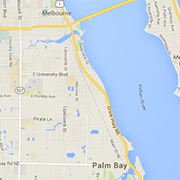STEM and the Mathematical Mind

STEM and the Mathematical Mind
STEM education refers to preparing students for careers in science, technology, engineering and mathematics. In order for a students to be successfully prepared for a STEM career, they must fully understand mathematics and apply the concepts to their chosen field.
We all went to school with the rare student who automatically saw the abstract solution in their mind’s eye, while we just shook our heads trying to figure it out. So how do we help a child develop a mathematical mind, and when should we start?
Infants come into the world hard-wired to learn mathematics. Blaise Pascal, a French mathematician, knew that if math is not part of a child’s early learning experience, then the mathematical mind underdevelops and the gaining of the concepts become much more difficult. Dr. Maria Montessori said, “Children display a universal love of mathematics, which is par excellence the science of precision, order, and intelligence.”
So, from birth, babies start to arrange their world. They start to see patterns and sensorially explore their newfound environment. They continue to build their internal order. When they reach their preschool years, a mathematical awakening occurs within the child, which parents experience as questions of, “How much,” “How many” and “Why.” It’s truly amazing how young children love big numbers much like they love big dinosaur names.
Around 4-and-a-half is a time to start nurturing your child’s love of numbers, when no fear exists. The use of hands-on materials that connect the hand to the mind form the bases for mathematical learning. One concept builds upon the next. Those hands-on materials allow a child to repeat the learning experience as often as they desire, ending in comprehension. Many children jump to abstraction through developing the inner image in their mind’s eye. This mathematical picture, in their mind, will last a lifetime.
Dr. Montessori developed a systematic mathematical program that teaches these concepts to help every child develop a mathematical mind. These days, parents and teachers are able to buy math manipulatives to teach some of the individual concepts. However, the beauty of Montessori is in the systematic presentation of the mathematical content.
There are hands-on materials to teach the 1-10 concepts and recognition of the names of numbers. But remember, young children love working with really big numbers, such as 3,428 + 4,271. That’s where the decimal system comes in, using hands-on materials.
Children who can count to nine can use the decimal system. Linear counting is also fun for children as they count to a 1,000. Hands-on materials can continue throughout the elementary years, helping children create the picture in their minds of how math comes together. I would tell sixth-grade students that if they could build a rectangle, they could factor an equation such as X2 + 6x + 9 = (x + 3) (x + 3). So let’s start preparing all children for STEM careers as they access their mathematical mind.
Cynthia Thomas founded her first Montessori school in Brevard County in 1983. She now operates five schools throughout Florida. She discovered Montessori’s unique approach when her children attended a school in Hawaii. She received her masters in education specializing in Montessori from Charminade University in Hawaii.
Check out this article in our DIGITAL MAGAZINE.








